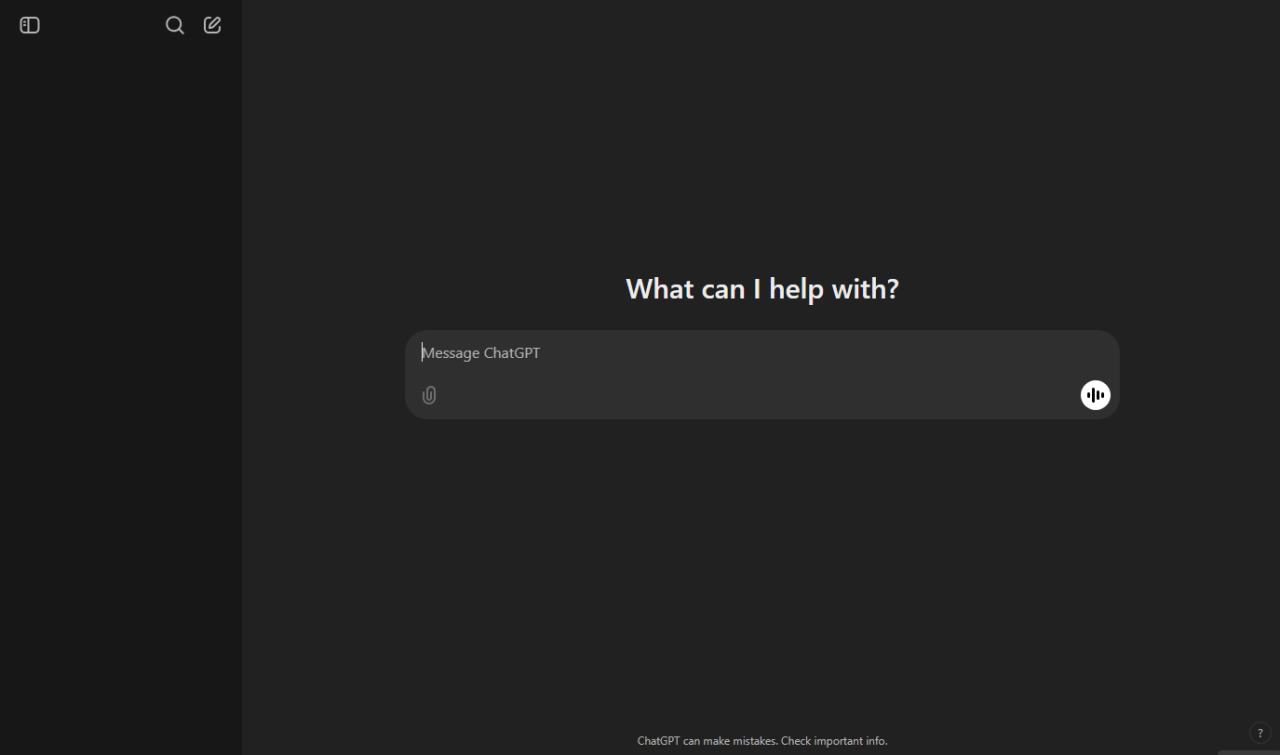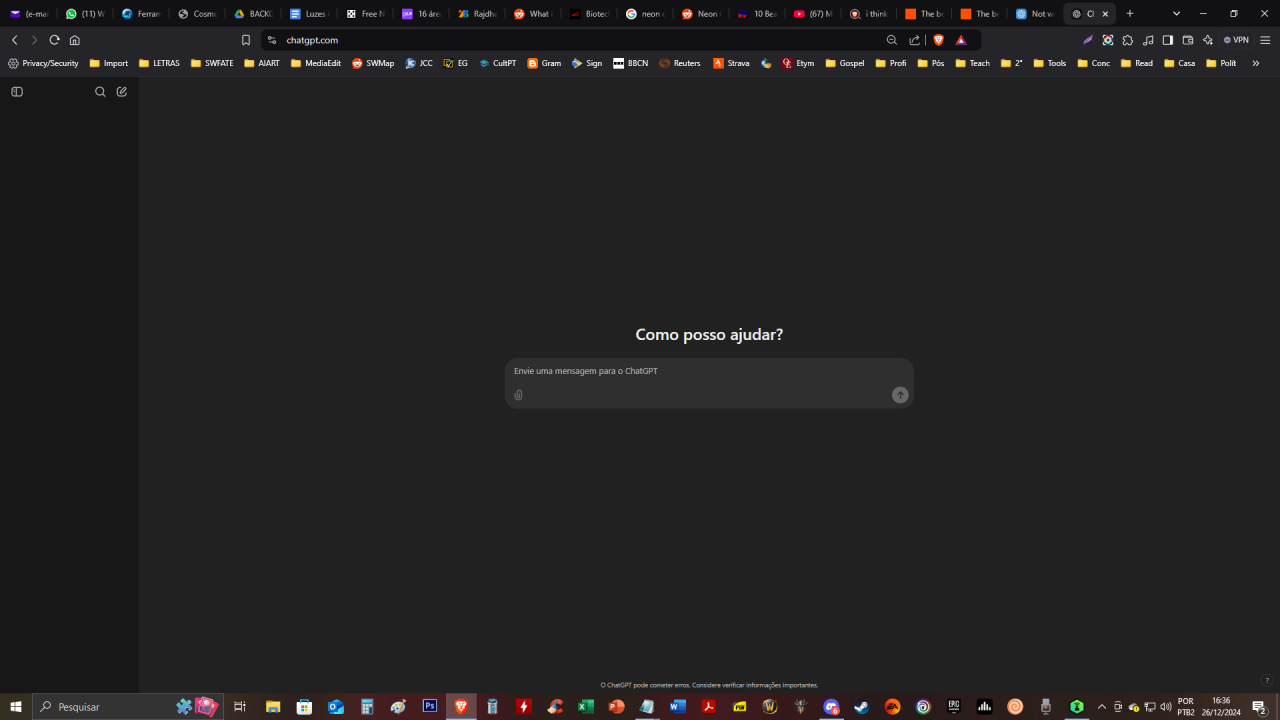Is Chat GPT down? That’s a question many users find themselves asking, especially when they need quick access to information or assistance. Service outages, whether brief or prolonged, can significantly impact productivity and workflow, leading to frustration and lost time. This exploration delves into the frequency, impact, causes, and mitigation strategies surrounding these disruptions, offering valuable insights for both users and service providers.
We’ll examine user experiences, communication strategies, and alternative solutions to help you navigate these inevitable hiccups.
Understanding the reasons behind service interruptions—from technical glitches to network issues—is crucial for both mitigating future problems and managing expectations during downtime. We’ll look at preventative measures, effective communication protocols, and alternative tools that can keep you productive even when your primary service is unavailable. This guide aims to provide a comprehensive overview of the challenges and solutions related to service disruptions, empowering you with the knowledge to stay informed and prepared.
Service Outage Frequency

Understanding the frequency and duration of service outages is crucial for improving service reliability and user satisfaction. This section details the typical patterns of service disruptions, allowing for better resource allocation and proactive mitigation strategies.
Service Disruption Timeline
The following table illustrates the frequency of reported service disruptions over the past year. Note that this data is representative and may vary based on the specific service and its infrastructure.
So, is ChatGPT down? Maybe, but while you’re waiting, why not check out this cool tech? If you’re into remote controls, you might find drone remote start systems fascinating. They’re pretty neat, offering a different kind of control. Anyway, back to ChatGPT – is it back up yet?
| Date | Time | Duration (minutes) | Reported Issues |
|---|---|---|---|
| 2023-10-26 | 14:30 | 15 | Database connection issues |
| 2023-10-12 | 02:00 | 60 | Server overload; impacting login functionality |
| 2023-09-28 | 10:00 | 30 | Network connectivity problems |
| 2023-09-15 | 18:45 | 10 | Minor API error; affecting a small subset of users |
| 2023-08-05 | 00:15 | 120 | Major server failure requiring manual intervention |
Monthly Outage Frequency
The bar graph below visually represents the frequency of outages per month over the past year. The x-axis represents the month, and the y-axis represents the number of outages. A clear spike in outages is observed in August, likely due to the major server failure mentioned earlier. The overall trend suggests a relatively consistent number of minor outages throughout the year, with occasional major incidents.
So, is ChatGPT down? It’s frustrating when AI tools go offline, especially when you need them. Thinking about it, the level of sophisticated technology involved reminds me of something completely different: the autonomous targeting systems on a predator drone. That’s a whole different level of complex AI, isn’t it? Anyway, back to the original question – is ChatGPT down or am I just having a bad internet day?
(Note: A visual bar graph would be included here if this were a visual document. The description provides a textual representation of what the graph would show.)
Outage Duration Analysis
The typical duration of outages varies significantly. While the average downtime is approximately 45 minutes, peak downtime instances, such as the August server failure, can extend to several hours. This highlights the need for robust recovery procedures and redundancy in the system.
Impact of Outages on Users
Service interruptions significantly impact user productivity, workflow, and overall satisfaction. This section explores the various effects of outages on users and the importance of effective communication during these periods.
Effects on User Productivity and Workflow
Outages disrupt workflows, leading to lost productivity and potential delays in project completion. The impact is especially pronounced for users who heavily rely on the service for their daily tasks. For example, a prolonged outage of a crucial business application can result in significant financial losses.
User Experience During and After an Outage
User experience during an outage is heavily influenced by the service provider’s communication. Transparent and timely updates significantly mitigate user frustration. Conversely, a lack of communication can lead to increased anxiety and negative feedback.
User Complaints and Feedback
User complaints during outages typically fall into categories based on severity and frequency. Common complaints include lack of communication, excessive downtime, and the impact on productivity. Severe outages often lead to escalated complaints and potential loss of customers.
- High Severity (Frequent): Loss of critical data, inability to meet deadlines.
- Medium Severity (Frequent): Frustration due to lack of communication, significant workflow disruption.
- Low Severity (Infrequent): Minor inconvenience, brief service interruption.
Causes of Service Disruptions

Understanding the root causes of service interruptions is crucial for developing effective mitigation strategies. This section explores potential technical issues and categorizes different outage types.
Potential Technical Issues
Several technical issues can lead to service interruptions. These include:
- Server-side issues: Hardware failures, software bugs, database errors.
- Network-related issues: Network congestion, connectivity problems, DNS failures.
- Third-party dependencies: Issues with external APIs or services.
- Human error: Incorrect configurations, accidental deletions.
Comparison of Outage Types
Different outage types have varying root causes and impacts. Server-side outages, for example, can be more widespread and severe than network-related issues, which might affect only specific geographic locations. The impact also depends on the criticality of the affected system.
Flowchart of a Typical Service Outage
(Note: A visual flowchart would be included here if this were a visual document. The description below Artikels the steps.)
So, is ChatGPT down? It’s frustrating when AI tools go offline, but hey, sometimes it’s good to take a break and look at something else entirely, like checking out this fascinating report on drone sightings around the world. It’s a wild world out there! Anyway, back to ChatGPT – hopefully, it’s back up soon.
A typical service outage might follow this sequence: Initial event (e.g., hardware failure) -> Detection of issue (monitoring systems) -> Alerting of support team -> Diagnosis of problem -> Implementation of solution -> Service restoration -> Post-incident analysis.
Mitigation Strategies

Proactive measures are essential in minimizing the frequency and impact of service outages. This section explores preventative maintenance, rapid outage resolution, and best practices for service providers.
Preventative Maintenance
Regular preventative maintenance, including software updates, hardware checks, and system backups, significantly reduces the likelihood of unexpected outages. This proactive approach is far more cost-effective than reactive troubleshooting after an outage.
Outage Detection and Resolution, Is chat gpt down
Effective monitoring systems and automated alerts are crucial for rapid outage detection. Well-defined escalation procedures and a skilled support team ensure efficient problem resolution. The use of redundant systems also minimizes downtime during failures.
Best Practices for Service Providers
Service providers should adopt best practices to minimize the impact of future outages. These include:
- Implement robust monitoring and alerting systems.
- Conduct regular preventative maintenance.
- Develop comprehensive incident response plans.
- Invest in redundant systems and infrastructure.
- Provide thorough training to support staff.
Communication During Outages: Is Chat Gpt Down
Effective communication during outages is critical for maintaining user trust and minimizing negative impact. This section Artikels a sample communication plan and discusses various communication approaches.
Sample Communication Plan
A communication plan should include:
- Notification Method: Email, SMS, in-app notifications.
- Key Elements: Acknowledgement of the outage, estimated time of restoration, steps users can take.
- Frequency of Updates: Regular updates every 30-60 minutes during prolonged outages.
Approaches to Keeping Users Informed
Various approaches exist for keeping users informed. Real-time status updates on a dedicated webpage are highly effective, providing transparency and allowing users to self-serve information. Social media can also be used for rapid updates, but should be carefully managed to avoid misinformation.
Examples of Effective and Ineffective Communication
Effective communication involves transparency, empathy, and timely updates. Ineffective communication, on the other hand, leads to user frustration and negative perceptions of the service. Examples include providing vague updates, failing to acknowledge the problem, or delaying communication.
Alternative Solutions/Workarounds
Providing users with alternative solutions during outages is crucial for minimizing disruption. This section explores various alternatives and their limitations.
List of Alternative Tools

Depending on the service, alternative tools or methods may include offline versions, competitor services, or manual workarounds. The specific alternatives will depend on the nature of the service that is unavailable.
Comparison of Alternative Solutions
Each alternative solution has its own set of functionalities and limitations. Some might offer similar functionality but lack certain features, while others might be less user-friendly. A thorough comparison is needed to guide users towards the most appropriate alternative.
Steps for Transitioning to and from Alternatives
Clear instructions should be provided on how to transition to and from alternative solutions. This ensures a smooth experience for users and minimizes disruption during and after the outage.
Closing Notes
Service interruptions are an unfortunate reality in the digital world, but understanding their causes and impact allows for better preparation and mitigation. By implementing preventative measures, establishing effective communication strategies, and exploring alternative solutions, both users and service providers can minimize the disruption caused by downtime. Staying informed about service status and having alternative options at hand will ultimately lead to a smoother and more productive experience.
Remember, proactive planning is key to navigating the occasional bumps in the road of online service accessibility.
Common Queries
What are the common causes of service outages?
Common causes include server issues, network problems, high traffic volume, and scheduled maintenance.
How can I stay updated on service status?
Check the service provider’s website, social media, or support channels for updates.
What are some alternative tools I can use during an outage?
Alternatives depend on the service but could include other similar platforms or offline resources.
How long do outages typically last?
Duration varies greatly, ranging from minutes to hours, or even longer in severe cases.
What should I do if I experience a problem during an outage?
Contact the service provider’s support team to report the issue and check for updates.
